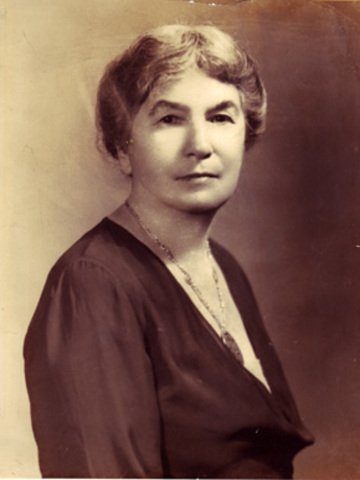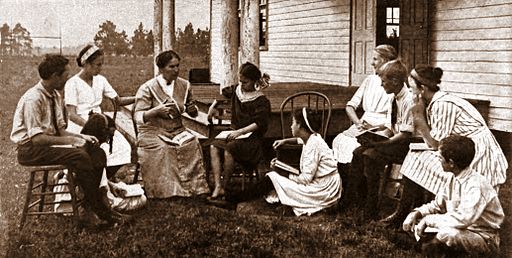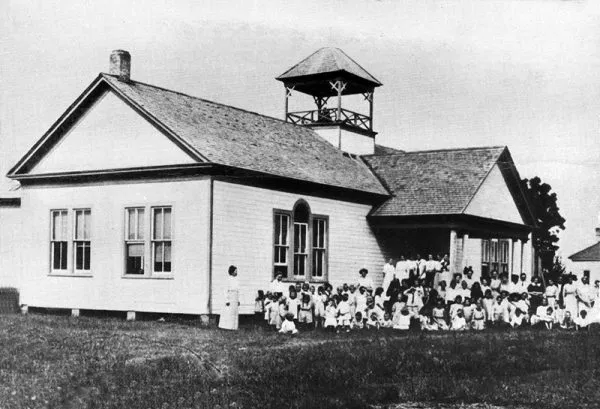Our Beginning
The Organic School takes pride in our dedication to preserving and practicing the organic education philosophy introduced by Marietta Johnson over a century ago.

Marietta Johnson 1864-1938
WE BELIEVE
Consequently, we postpone and relax enforced structure according to the individual needs and abilities of each child. We contrast and balance teacher-driven instruction by providing the appropriate time, space and materials to prompt spontaneous, creative and self-inspired activity. For over a century, these methods have produced content, creative, engaged and motivated learners – happily active participants in developing and nourishing their minds, bodies and spirits. Our Organic family provides an environment for each child to learn as naturally as in any other setting – without grades, tests or time limits –without pressure.
Fairhope, Alabama, was founded in 1894 as an experimental Utopian community based on Henry George’s book Progress and Poverty, and a radical concept known as the “Single Tax Colony”. The locale was chosen for its natural beauty, its fertile land, temperate climate, and potential for growth. Situated on the eastern shore of Mobile Bay, the town was easily accessible by boat as well as horseback and eventually automobiles. Fairhope soon grew into a thriving town populated by artists, idealists and non-conformists.
One of Fairhope’s residents at the time was a Minnesota teacher named Marietta Johnson, who brought her unconventional ideas about education to the open-minded new town, and with financial aid from friends, founded The School of Organic Education in 1907. A proponent of a unique philosophy of progressive education, and a contemporary of Rudolf Steiner and Maria Montessorri, Mrs. Johnson created a school that had no examinations, no homework, and no possibility that any child would ever fail.
The school was a laboratory for ideas in education that were considered radical at the time, but have become more valid with each passing decade. She was one of the first to advocate the prolongation of childhood – a period of intense, natural education – so that its attitude would extend to the whole of life. Mrs. Johnson also believed that physical education should take the form of dancing and creative games, and often said, “the greatest minds are those able to use the spirit of play in their work.”
America’s most famous educational philosopher of the day, John Dewey, came to Fairhope in 1913 to review her revolutionary approach. He was extremely impressed by her work, and even wrote a chapter in his book Schools of Tomorrow about Mrs. Johnson and her unique school. Fairhope became quite well known in the 1920’s largely because of Marietta Johnson.
“Children should grow mentally as they do physically, without effort or strain”
Marietta JohnsonDuring her life in Fairhope, Marietta became respected on the world stage as a powerful speaker and lecturer.
She went on numerous lecture tours to share her ideas on education, raising funds and donations from the likes of Mrs. Alexander Graham Bell, Mrs. Woodrow Wilson and Mr. and Mrs. Henry Ford. As word spread about the Organic School, Fairhope’s intellectual elite eagerly enrolled their children.


The school reached its zenith in the 1920s, in part because of John Dewey’s book and its reference to Mrs. Johnson and her school. Through the great depression, two world wars and Mrs. Johnson’s death in 1938, the Organic School has never closed its doors.
Its graduates have become doctors, lawyers, scientists, teachers, writers, artists, engineers, poets, university professors, dance teachers, potters, computer technicians and entrepreneurs in virtually every field of endeavor. Many of the schools graduates, after traveling and working around the world, have come back to Fairhope. Some never left.
The school’s original 10-acre campus was located where Alabama Coastal Community College now stands in downtown Fairhope. A museum dedicated to Marietta Johnson occupies one of the original buildings on that site. In 1986, the school moved to an eight acre plot of land on Pecan Street just off Section Street, one of Fairhope’s main arteries.
